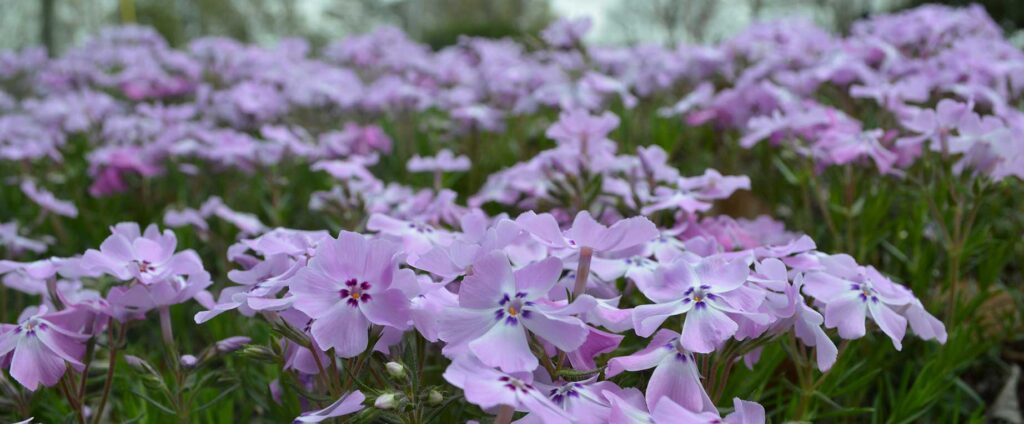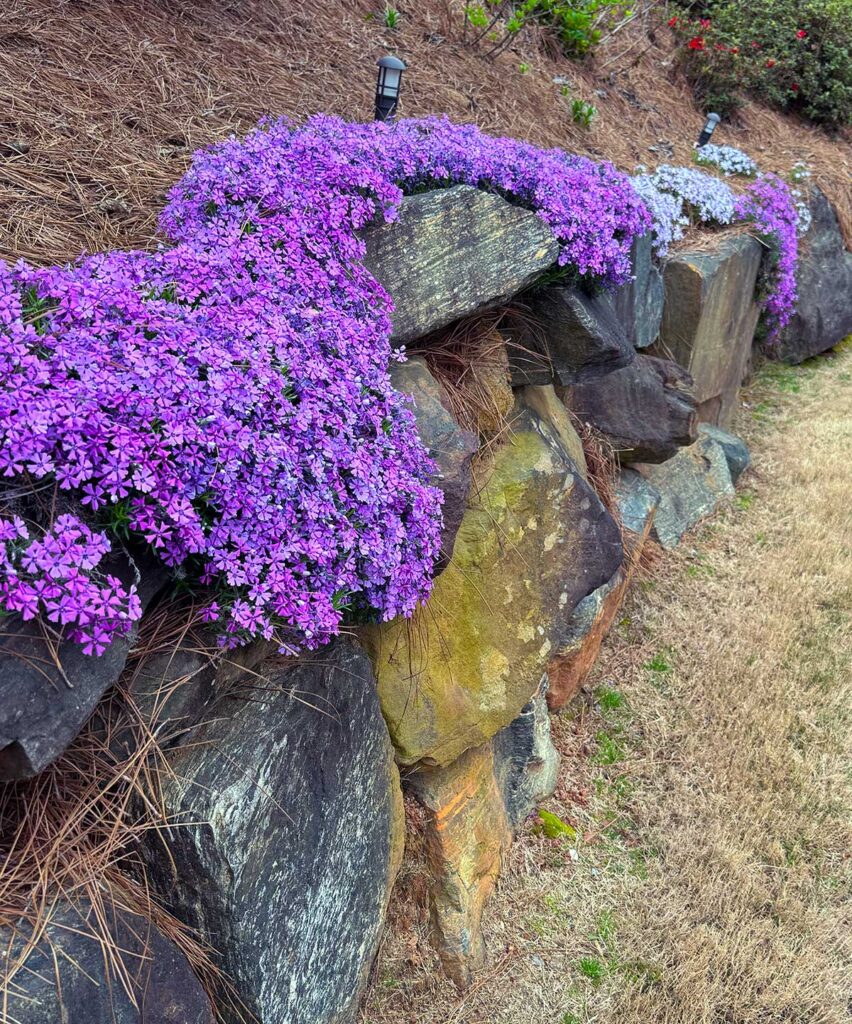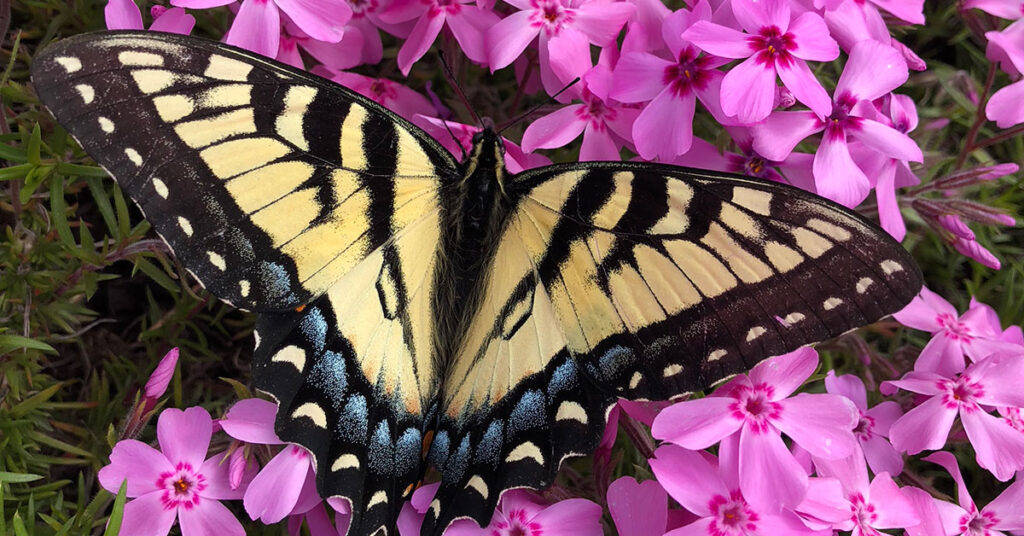As spring arrives, our garden has a carpet of low-growing, bright pink flowers that catch your eye. It’s a splash of bright color before the rest of our garden has awoken. It really is a sight to see.

Blooming Time
Creeping phlox (Phlox subulata) blooms in late March through May. Flowers come in pink, lavender, magenta, purple, white, and even blue. If you deadhead the spent flowers when half of the plant has bloomed, it can continue making flowers in the summer.
Plants grown in full sun will have the best blooms, but in the deep southern U.S., consider planting them where they get some afternoon shade.
Once the flowers are over, the leaves make a nice, dense ground cover that prevents weeds from growing in your garden.
How to Grow Creeping Phlox

This ground cover, also known as moss phlox, is easy to grow – perfect for beginner gardeners. It grows best in well-drained soil with organic material. It is hardy in USDA Zones 3 to 9.
In its native range, it grows in dry rocky or sandy soil, open woods, and on slopes. It can be added to a rock garden and looks nice draping over a rock wall.
Creeping phlox spreads up to 3 feet wide and can be as tall as 6 inches. It is drought- tolerant, but prefers to be watered at least once a week during dry periods. As this ground cover can grow on a slope, you can utilize it to help with erosion control on low slopes.
How to Propagate Creeping Phlox
Divide your plants in the fall and keep the transplants well-watered for a few weeks. Since these plants spread, you’ll soon have more areas covered in spring color. Even just a small piece of a plant with roots moved to another area will quickly spread the following season.
If you’re buying new plants – here’s my tip: buy them after they have bloomed. The garden centers put them on sale, and they will have a chance to get established and spread for next season in your garden.
Wildlife Value
Creeping phlox is an early food source for butterflies (particularly swallowtails), bees, and hummingbirds. Rabbits will eat the leaves.

Native Range
Moss phlox or creeping phlox is native to eastern and central United States, this includes Maine, New Hampshire, Vermont, Massachusetts, Connecticut, Rhode Island, New York, Pennsylvania, Delaware, Maryland, Virginia, West Virginia, North Carolina, Tennessee, Kentucky, Ohio, Michigan, Indiana, Illinois, Iowa, Missouri, Arkansas, Louisiana, and Georgia.
I really enjoy the mat of brightly colored flowers that creeping phlox produces in early spring. After a long winter, it’s a welcome sight. When I drive through town, the color always catches my eye in people’s yards.
In my garden, I have several colors of phlox planted underneath deciduous shrubs and cascading over the edge of the retaining wall. So, by the time the phlox is done blooming, the shrubs are coming in. It’s a nice balance.
